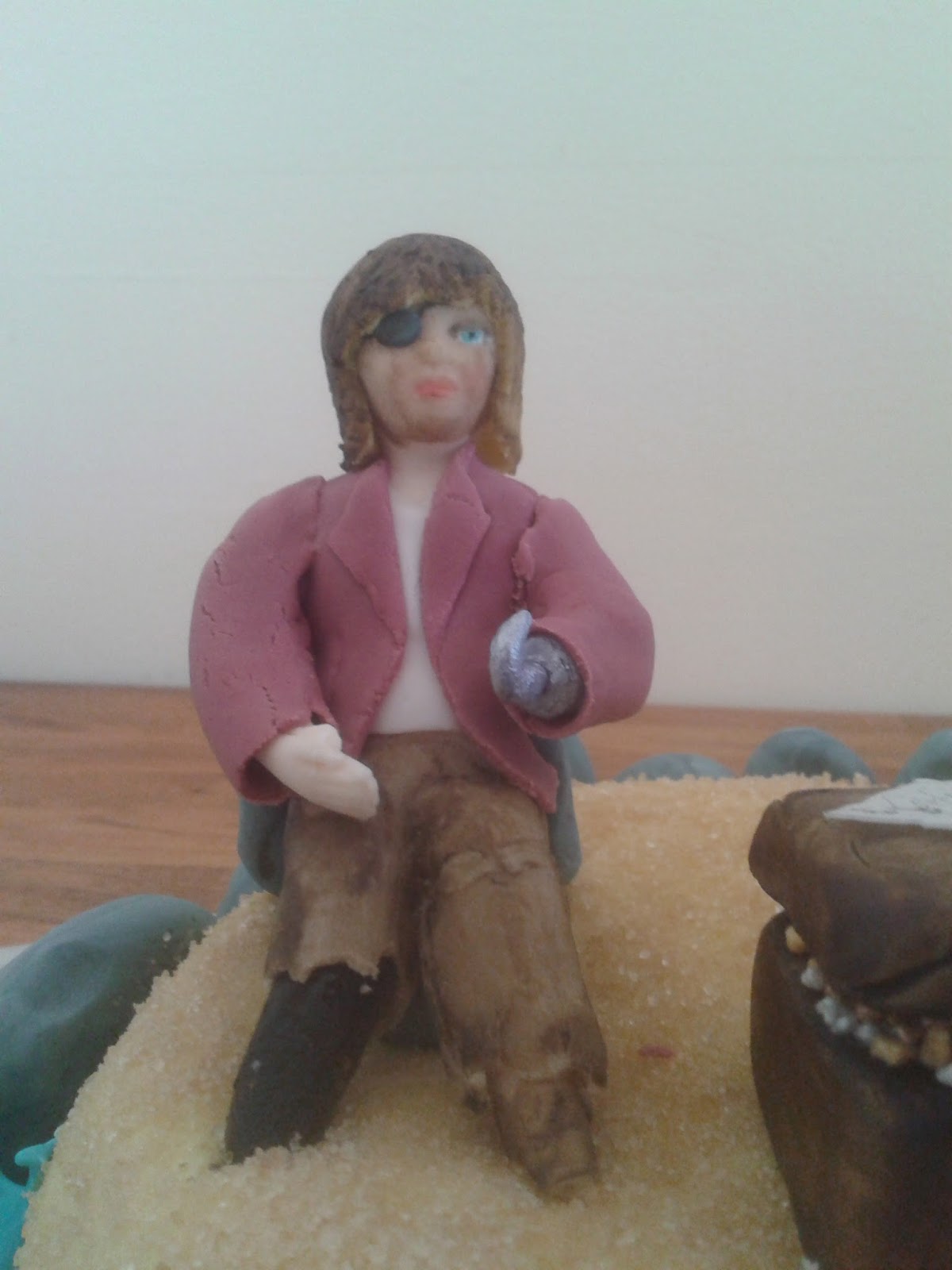I regularly babysit a delightful little boy who is having a pirate themed 4th birthday at soft play. I have decided that for his birthday cake I will make him a pirate figure, with a treasure chest, on desert island, complete with palm tree, and a boat ... All of which will be as edible as possible - of course! I'm also trying to give the cake a childish perspective. You may wish to add a palm tree to yours.
You will need:
Shallow Round Chocolate Cake (8" diameter, 1½" high)
White Chocolate Butter Icing
Sandy-Brown fondant Icing
Demerara Sugar
Grey Fondant Icing
White Royal Icing
Aqua Royal Icing
Maltesers
Pirate Figure
Boat and Treasure Chest
Cake board (10"x14")
Note: Whilst this cake is rather elaborate, it is also quite small. If you want a bigger cake, then you can add a larger tier under the island, ice it blue and add 'under water' features to the side (e.g. fish, seaweed, octopus, shark etc.) and sit the boat on top of the bottom tier. and the Island can be stacked (using a direct stacking method) off centre on top of the bottom tier.
Firstly cut the 8" cake so the sides slope down to create a beach. Do this so you have approximately a 6" diameter circle still intact and level on top, it doesn't matter if the slope isn't even all the way round. you may wish to add features to the beach such as bays and spits. I chose to add a cliff face round the back and a rocky spit off to one side which my boat was shipwrecked onto.
Cut the cake horizontally and add the white chocolate butter icing in between the layers.
Roll out the Sandy-brown fondant icing and cover the cake, trim to size. Position the cake on the cake board, secure in place with a dab of butter icing. Brush a thin layer of edible glue over the cake and sprinkle the Demerara sugar over the top for a sandy effect. Remove any excess from the cake board.
Next I made the cliffs. Using grey fondant icing that had uneven colour I shaped 'rocks' to go around behind the island where my vertical face would be. I extended these into the ocean to form a rocky outcrop my boat would be wrecked upon.
I also formulated a little stone 'seat' for my pirate - so he stayed upright!
Ocean:
Cover the cake board with the royal icing using a silicone pastry brush to give an uneven surface, push the 'water' right up to island to 'seal' the cake in. Position the boat - whilst the coating is still wet. Then add white royal icing via a piping bag with a wide round nozzle where you want the wave crests to be.
Pirate Flag:
Print off a skull and cross bones with black background so that a black rectangle the height of the skull and cross bones plus border and twice the length plus border is black. Cut out this shape, and fold it in half. Place a cocktail stick into the fold and glue the rectangle shut to form a flag. Trim if required
Map:
I used an edible ink printer for my map, I printed the design out onto edible wafer paper and trimmed the excess.




















